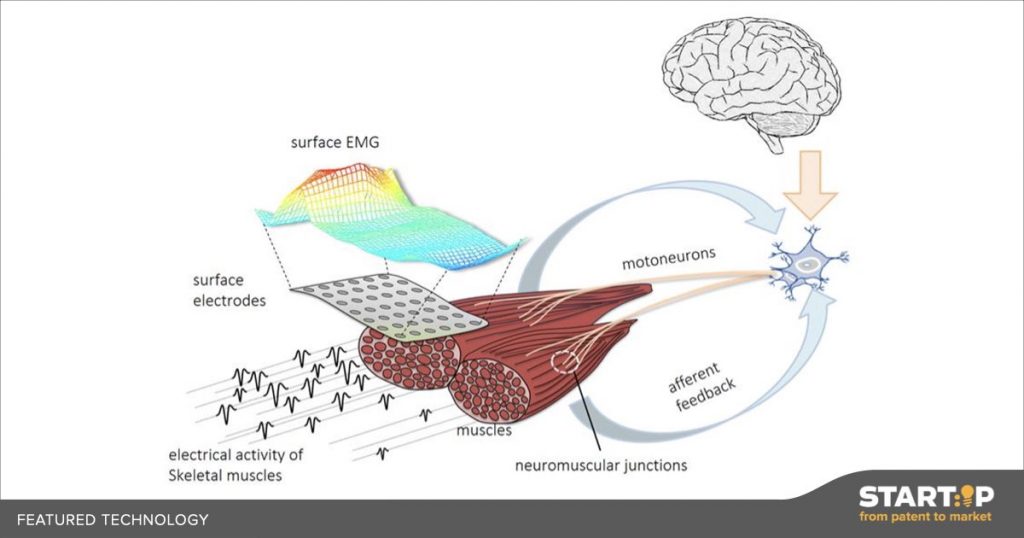Measuring how the brain controls muscle movement is of great value, for example in assessing physical rehabilitation, neurodegenerative or muscular degenerative diseases, and athletic training. Current techniques for this, however, lack depth of information about individual nerve-to-muscle-fibre functional connections. This technology provides the resolution for these individual connections, creating a sharper image of nerve-motor function.
START:IP
Technology Abstract
Decoding brain-to-muscle signals
Decoding brain-to-muscle signals with higher resolution
Bookmark6
Each of our muscles is made of up many thousands of individual muscle fibres, which are connected to the brain via nerves. A nerve and a group of muscle fibres that the nerve innervates is defined as a motor unit. Within one muscle there are many motor units, which can behave differently even though they are part of the same muscle. A detailed picture of how each of the individual motor units function, both during voluntary muscle contractions and in response to external stimuli, is necessary to properly assess brain-to-muscle signaling. Current measurement techniques make it very difficult to measure the activity of these individual motor units – one has to undergo repeated invasive measurements with a needle into the muscle at different locations (electromyography, or EMG). An alternative non-invasive measurement technique has been developed, so-called surface EMG, which takes place at the surface of the skin, but this is very limited in terms of resolution. Surface EMG can only give a global picture of the activity of all the motor units, so despite its convenience it does not help in improving our understanding of motor unit function. That is, until now. This group has developed an algorithm that is capable of deconvoluting the signal from surface EMG measurements into individual motor unit signals. This greater resolution means greater information, and therefore more powerful and precise analysis of brain-to-muscle signaling.
If you click the button and fill out the form to be “matched” with a technology, we will introduce you to the scientist / transfer manager of the respective research institution. In this way, you immediately have the chance to receive more detailed information and to start discussions about a possible joint project.




